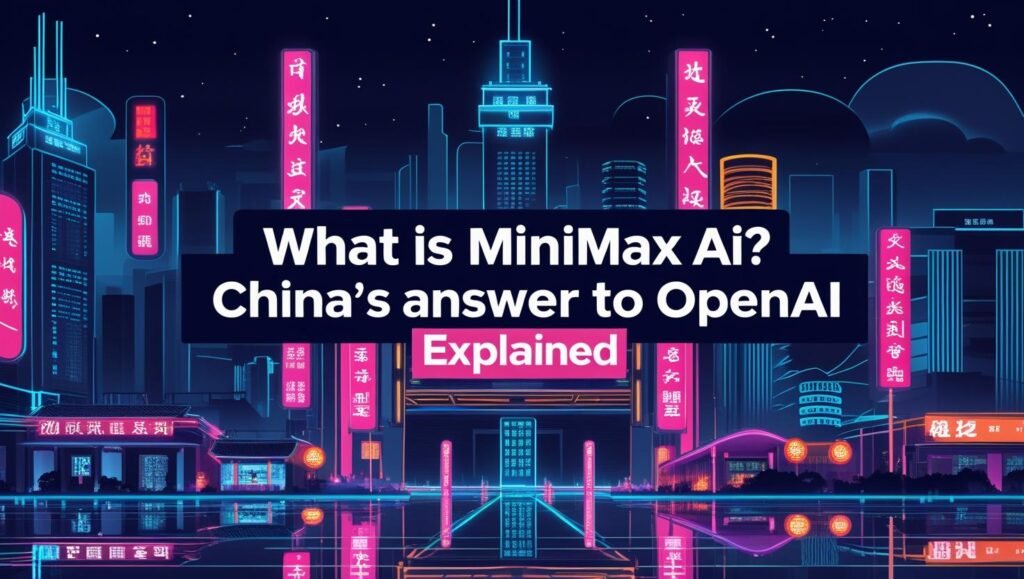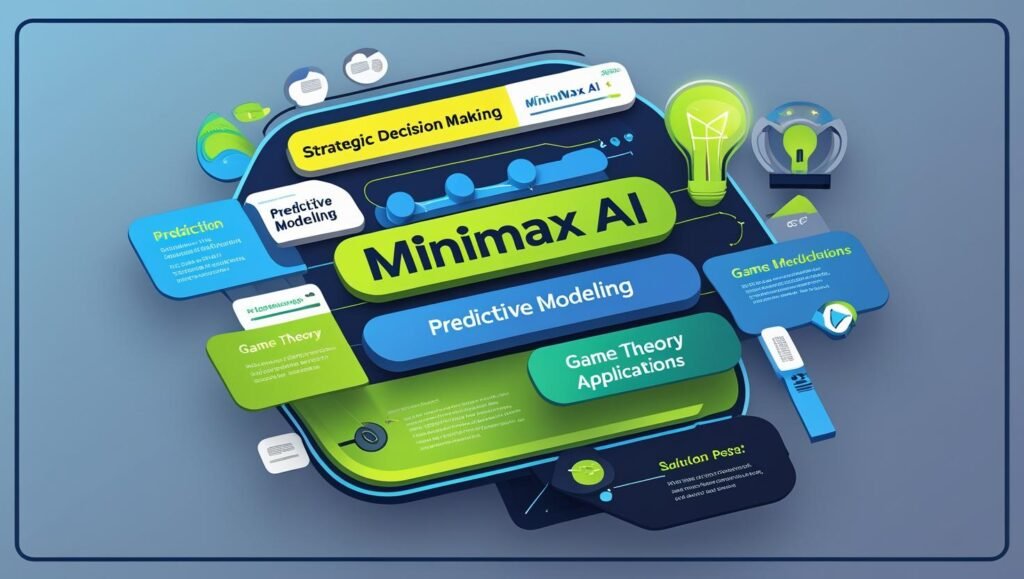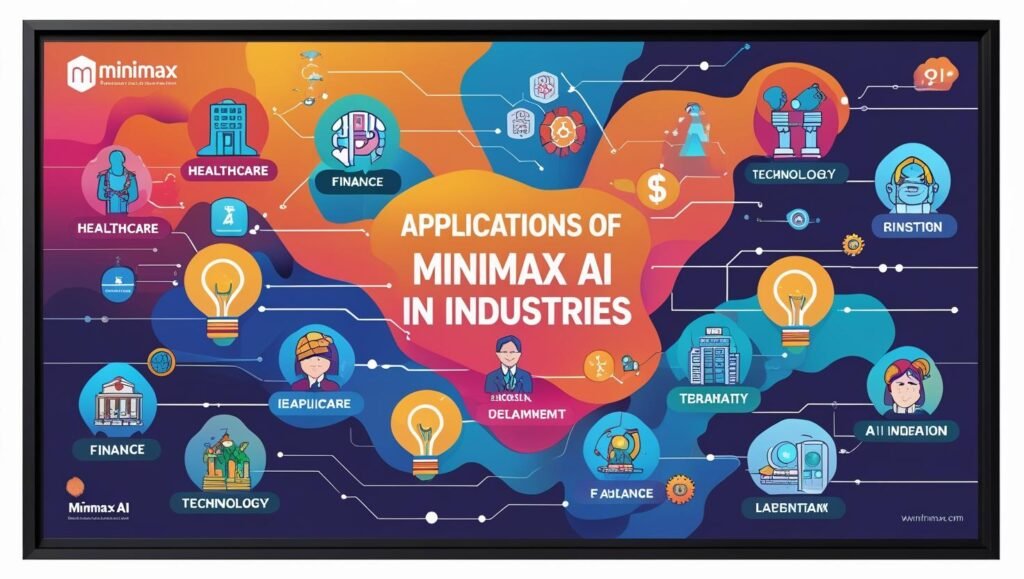What Is Minimax AI? China’s Answer to OpenAI Explained

In the fast-evolving landscape of artificial intelligence, China’s Minimax AI emerges as a formidable counterpart to industry giants like OpenAI. This innovative technology is not just about advanced algorithms; it represents a strategic shift in how nations are leveraging AI to drive economic growth and technological supremacy.
By prioritizing collaborative intelligence and real-time decision-making, Minimax AI aims to redefine problem-solving landscapes across various sectors, from healthcare to finance.
As global competition heats up, understanding Minimax AI’s underlying principles and applications is vital for grasping the future of AI technology. Join us as we delve into the nuances of this groundbreaking approach and explore how it positions China on the digital frontier.
The Rise of AI in China
Artificial intelligence (AI) has been a central theme in China’s technological ambitions over the past decade. The nation’s commitment to spearheading AI research and development is evident from its substantial investments and policy frameworks aimed at fostering innovation. In 2017, the Chinese government unveiled its “Next Generation Artificial Intelligence Development Plan,” which outlined the goal of becoming the world leader in AI by 2030. This strategic blueprint emphasizes the importance of AI in driving economic progress, enhancing national security, and improving societal well-being.
Under this ambitious plan, China has seen a proliferation of AI startups and significant partnerships between academia, industry, and government bodies. Institutions such as Tsinghua University and companies like Baidu, Alibaba, and Tencent have become powerhouses of AI research, pushing the boundaries of machine learning, natural language processing, and neural networks. These efforts have not only accelerated technological advancements but also positioned China as a formidable player in the global AI ecosystem.
The rise of AI in China is further bolstered by the country’s vast amounts of data, which fuel machine learning algorithms. With over a billion internet users and a highly digitized society, China has access to an unparalleled volume of data that can be leveraged to train AI models. This data advantage, combined with a supportive regulatory environment and a culture of innovation, has laid the groundwork for the emergence of groundbreaking AI technologies, such as Minimax AI.
Key Features of Minimax AI

Minimax AI stands out due to its unique approach to artificial intelligence, emphasizing collaborative intelligence and real-time decision-making. Unlike traditional AI systems that operate independently, it integrates human expertise into the AI loop, creating a symbiotic relationship between machines and humans. This collaboration enhances the AI’s ability to solve complex problems by leveraging human intuition and domain-specific knowledge, resulting in more accurate and contextually relevant outcomes.
Another key feature is its focus on real-time decision-making. In dynamic environments where conditions change rapidly, the ability to process information and make decisions on the fly is crucial. Minimax AI’s architecture is designed to handle such scenarios, utilizing advanced algorithms that can quickly analyze vast datasets, identify patterns, and generate actionable insights. This capability is particularly valuable in industries like finance, healthcare, and logistics, where timely decisions can significantly impact outcomes.
Furthermore, Minimax AI prioritizes transparency and explainability in its operations. One of the major criticisms of traditional AI systems is their “black box” nature, where the decision-making process is opaque and difficult to interpret. It addresses this by incorporating mechanisms that provide clear explanations for its decisions and recommendations. This transparency builds trust among users and stakeholders, fostering greater acceptance and adoption of AI solutions across various sectors.
Comparison with OpenAI
When comparing Minimax AI with OpenAI, several distinctions become apparent, reflecting different philosophies and strategic objectives. OpenAI, founded in the United States, has been at the forefront of AI research, particularly in developing general-purpose AI models like GPT-3. OpenAI’s focus has been on creating highly versatile AI that can perform a wide range of tasks with minimal human intervention. This has led to impressive advancements in natural language understanding, content generation, and other domains.
In contrast, Minimax AI’s approach is more collaborative, integrating human expertise into the AI framework. While OpenAI aims for maximal autonomy, Minimax AI seeks to enhance human capabilities through intelligent augmentation. This difference in approach underscores a broader cultural and strategic divergence between the two entities. OpenAI’s model is often seen as a pursuit of creating AI that can operate independently, whereas Minimax AI emphasizes synergy between human intelligence and machine learning.
Additionally, the two organizations differ in their geographical and regulatory contexts. OpenAI operates within the framework of Western regulations, which often prioritize ethical considerations and data privacy. Minimax AI, on the other hand, benefits from China’s more flexible regulatory environment, which allows for rapid experimentation and deployment of AI technologies. This regulatory landscape enables Minimax AI to innovate at a pace that might be challenging for OpenAI in more restrictive environments.
Applications of Minimax AI in Various Industries

Minimax AI’s versatility makes it applicable across a wide range of industries, each benefiting from its unique strengths in collaborative intelligence and real-time decision-making. In the healthcare sector, it is revolutionizing diagnostics and treatment planning. By analyzing vast amounts of medical data, including patient histories, lab results, and imaging studies, the AI can provide doctors with insights that enhance diagnostic accuracy and personalize treatment strategies. This collaborative approach ensures that medical professionals can leverage AI to make more informed decisions, ultimately improving patient outcomes.
In the financial industry, Minimax AI is transforming risk management, fraud detection, and investment strategies. Financial markets are characterized by their volatility and complexity, requiring real-time analysis and swift decision-making. It’s ability to process large volumes of financial data and identify trends allows institutions to mitigate risks, detect fraudulent activities, and optimize investment portfolios. By working alongside financial analysts, Minimax AI enhances the precision and effectiveness of financial operations.
The logistics and supply chain sectors also stand to gain significantly from Minimax AI. Efficient logistics management involves coordinating numerous variables, such as inventory levels, transportation routes, and delivery schedules. Minimax AI’s real-time decision-making capabilities enable companies to optimize these processes, reducing costs and improving service delivery. By integrating with human expertise, the AI can adapt to unexpected disruptions, such as weather events or supply chain bottlenecks, ensuring seamless operations.
The Technology Behind Minimax AI
At the core of Minimax AI lies a sophisticated technological framework that integrates various advanced algorithms and computational techniques. One of the foundational elements is machine learning, which enables the AI to learn from data and improve its performance over time. Minimax AI employs a combination of supervised, unsupervised, and reinforcement learning methods, allowing it to adapt to different types of data and problem domains. This versatility is crucial for addressing the diverse challenges encountered across various industries.
Natural language processing (NLP) is another critical component of Minimax AI. NLP techniques allow the AI to understand, interpret, and generate human language, facilitating seamless communication between machines and humans. This capability is particularly valuable in applications such as customer service, where Minimax AI can interact with users in a natural and intuitive manner. Advanced NLP models enable the AI to comprehend context, sentiment, and nuances in language, enhancing its ability to provide relevant and accurate responses.
Moreover, Minimax AI leverages cutting-edge hardware and computational resources to achieve its performance goals. High-performance computing (HPC) clusters and specialized processors, such as graphics processing units (GPUs) and tensor processing units (TPUs), provide the necessary computational power for training and deploying complex AI models. These hardware advancements, coupled with efficient algorithms, enable Minimax AI to process large datasets and perform real-time analysis, making it a robust solution for demanding applications.
Future Prospects for Minimax AI

The future prospects for Minimax AI are promising, with the potential to drive significant advancements across various domains. One of the key areas of growth is the continued integration of Minimax AI into everyday applications, making AI more accessible and beneficial for a broader audience. As the technology matures, we can expect to see Minimax AI embedded in smart devices, autonomous vehicles, and personalized digital assistants, enhancing the convenience and efficiency of daily life.
Another exciting prospect is the expansion of Minimax AI’s capabilities through ongoing research and development. Advances in areas such as quantum computing, neuromorphic engineering, and edge AI have the potential to further enhance the performance and versatility of Minimax AI. These technological breakthroughs could lead to more powerful and energy-efficient AI systems, capable of tackling even more complex challenges and operating in a wider range of environments.
Collaboration and partnerships will also play a crucial role in the future of Minimax AI. By working with international research institutions, industry leaders, and government bodies, Minimax AI can foster a global ecosystem of innovation and knowledge sharing. Such collaborations can accelerate the development of new AI applications, drive the adoption of best practices, and address common challenges, ultimately contributing to the advancement of AI technology on a global scale.
How Minimax AI is Shaping the Global AI Landscape
Minimax AI is not only a testament to China’s technological prowess but also a significant force shaping the global AI landscape. Its emphasis on collaborative intelligence and real-time decision-making sets a new standard for AI applications, influencing how other countries and organizations approach AI development. By demonstrating the value of integrating human expertise with machine intelligence, Minimax AI is fostering a shift towards more holistic and context-aware AI solutions.
The global competitive dynamics in AI are also being reshaped by Minimax AI’s advancements. As nations vie for leadership in AI technology, Minimax AI’s success highlights the importance of strategic investments, supportive policies, and a robust innovation ecosystem. Other countries are likely to take note of China’s approach and adopt similar strategies to bolster their own AI capabilities. This competitive environment can drive faster innovation, benefiting the global AI community.
Furthermore, Minimax AI’s contributions extend to the ethical and regulatory discourse surrounding AI. By prioritizing transparency and explainability, Minimax AI sets a positive example for responsible AI development. As the technology proliferates, it is crucial to establish global standards and frameworks that ensure the ethical use of AI. It’s practices can inform these efforts, promoting a balanced approach that harnesses the benefits of AI while safeguarding against potential risks.
Final Thoughts
In conclusion, Minimax AI represents a significant milestone in the evolution of artificial intelligence, embodying China’s strategic vision and commitment to technological leadership. Its unique approach, characterized by collaborative intelligence and real-time decision-making, sets it apart from other AI paradigms and positions it at the forefront of innovation. It’s applications across various industries demonstrate its versatility and potential to drive transformative change.
As we look to the future, the continued development and deployment of Minimax AI will undoubtedly have far-reaching implications. By addressing ethical considerations and fostering global collaboration, it can contribute to a more responsible and equitable AI landscape. The technology’s ability to enhance human capabilities and solve complex problems underscores its value as a tool for progress and improvement.
Ultimately, Minimax AI’s emergence signals a new era in artificial intelligence, one that prioritizes synergy between humans and machines. By embracing this innovative approach, we can unlock new possibilities and shape a future where AI serves as a catalyst for positive change.
